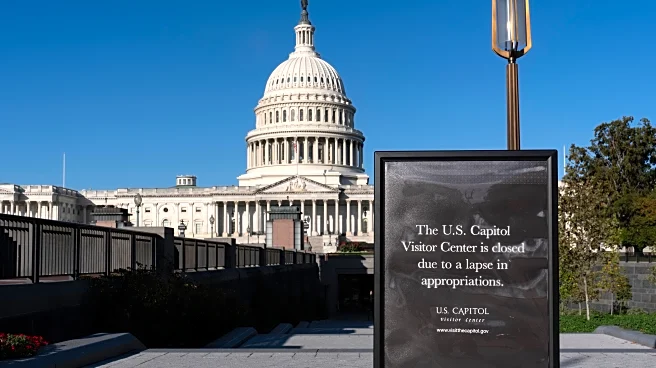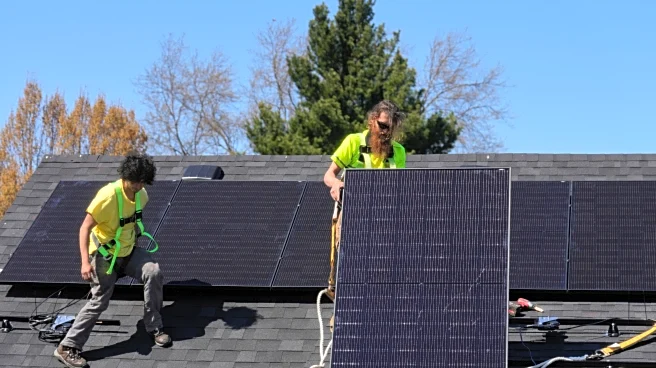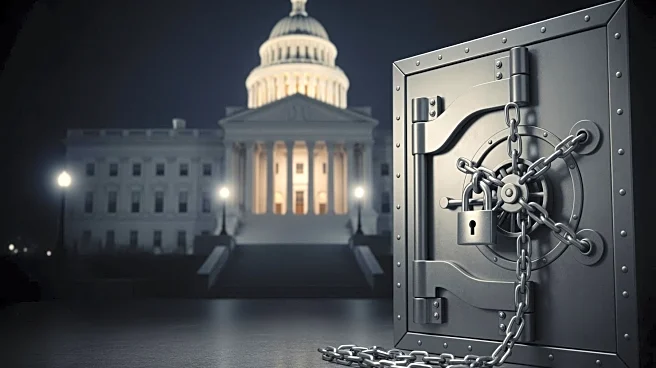What's Happening?
The Trump administration is on track to significantly reduce the workforce of the Environmental Protection Agency (EPA) by the end of 2025. According to reports, the agency is expected to cut approximately one-third of its staff, reducing the number of employees
from 16,155 to around 9,700. This reduction is part of a broader initiative led by EPA Administrator Lee Zeldin, which has already seen a 23% decrease in personnel. The cuts are expected to affect the agency's ability to manage pollution control and environmental protection, with a particular focus on reducing research staff by up to two-thirds. These changes are reminiscent of past reductions during the Reagan administration, which faced significant backlash and eventual reversal.
Why It's Important?
The planned staff reductions at the EPA could have significant implications for environmental protection and public health in the United States. With fewer employees, the agency may struggle to enforce environmental regulations, conduct necessary research, and oversee the cleanup of toxic sites. This could lead to increased pollution and health risks for communities across the country. The cuts also raise concerns about government transparency and the ability of the EPA to fulfill its mandate. Stakeholders, including environmental groups and public health advocates, may view these reductions as a step backward in the fight against pollution and climate change.
What's Next?
As the Trump administration moves forward with these cuts, Congress will play a crucial role in determining the final outcome. The proposed reductions are part of a broader budget proposal that Congress must approve. If enacted, these cuts could lead to further scrutiny and potential legal challenges from environmental organizations and other stakeholders. Additionally, the impact of these reductions on the EPA's operations and effectiveness will likely be closely monitored by both supporters and critics of the administration's environmental policies.
Beyond the Headlines
The decision to reduce EPA staffing levels may have long-term implications for the agency's ability to respond to future environmental challenges. The cuts could hinder the development of new regulations and the enforcement of existing ones, potentially leading to increased environmental degradation. Furthermore, the reduction in research staff may limit the agency's capacity to study and address emerging environmental threats, such as climate change and pollution from new industrial activities.















